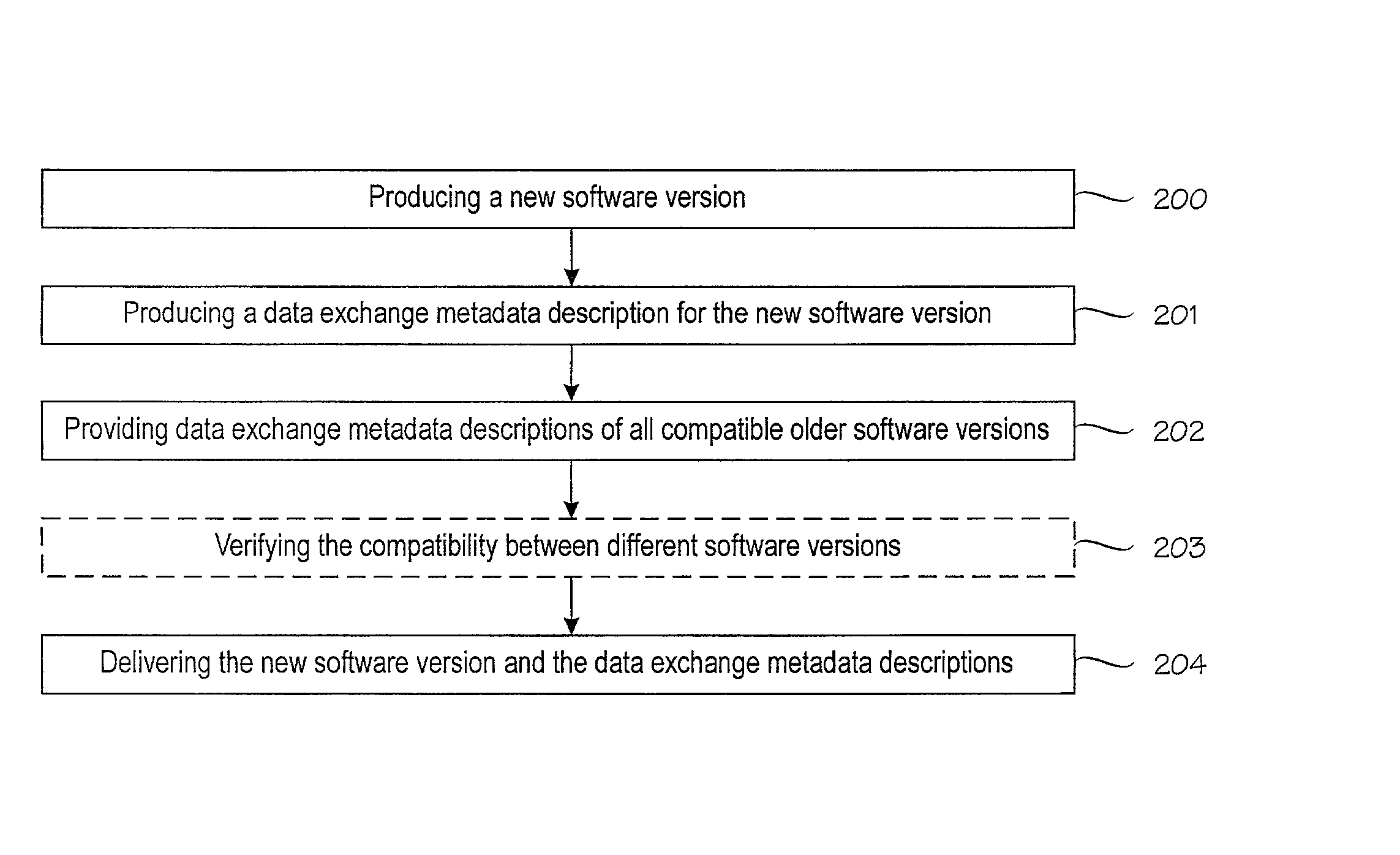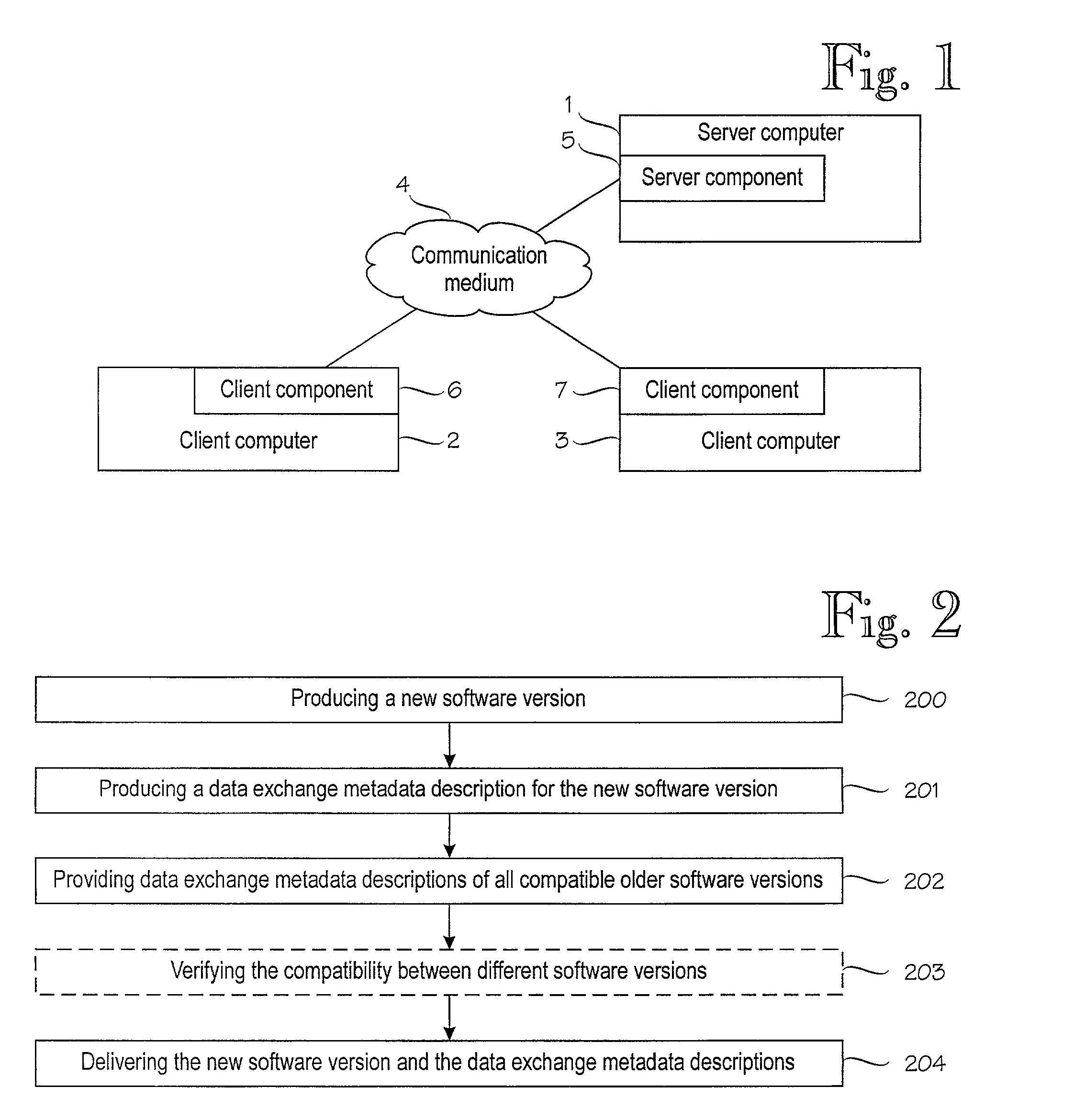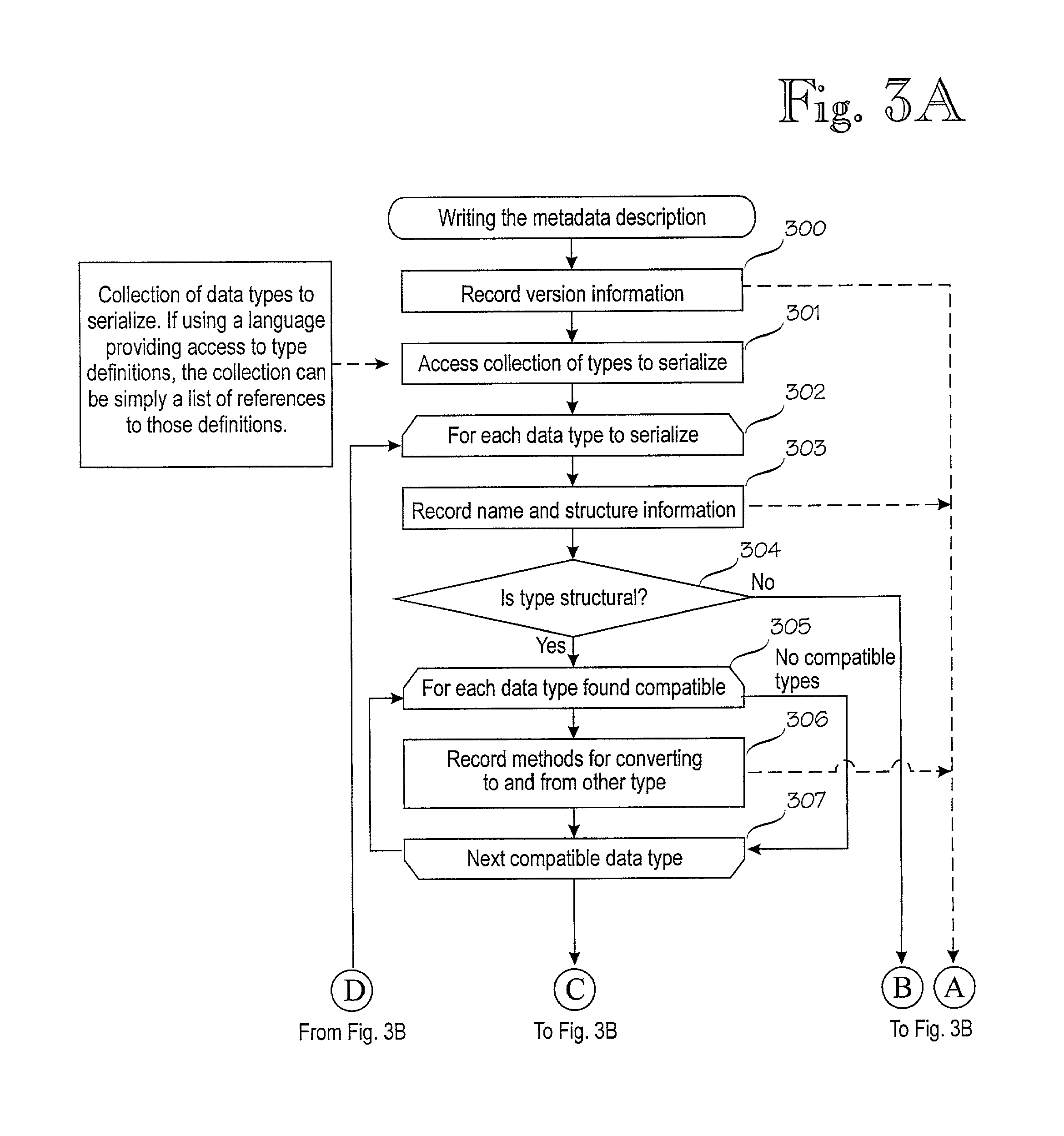[0009] An
advantage of the present invention is that there is no need to write a version-specific
mapping algorithm separately for each pair of known counterpart software versions in the manner required in the prior art. As a consequence, the need to maintain explicit mapping algorithms used in the prior art, as well as the associated problems, are also avoided. Thus, delivery of a new software version does not require a new
mapping algorithm for each older version. Instead, in the present invention it is only necessary to provide, preferably automatically, a
metadata description of the relevant data structures of the new software version. The actual mapping, called a
serialization scheme herein, is then created, and preferably also verified, automatically between the new software version and any older counterpart software version by means of a universal
algorithm and the metadata descriptions of these two component versions, either prior to delivery or subsequent to the delivery. The present invention also improves the overall performance because very few additional steps are needed in the algorithms, and the
data stream itself does not have to carry any version and / or structure information.
[0010] In an embodiment of the invention, a delivery of a new version includes only the data exchange
metadata description of that new version, and the data exchange metadata descriptions of compatible versions of the counterpart software component(s) are delivered later, for example in the data exchange session with the respective version. In another embodiment, the data exchange metadata descriptions for substantially all compatible versions of the counterpart software component(s) are delivered with each new version of a software component, in addition to the data exchange
metadata description of that new version.
[0011] In an embodiment of the invention, the
serialization scheme is preferably prepared and stored by the installed new software version when a data exchange with an older version of a counterpart component is carried out first time. In another embodiment, the serialization scheme can be prepared and stored automatically beforehand. In a yet further embodiment, the serialization scheme is prepared for at least one pair of software versions prior to the delivery of a newer version, and delivered with the new software version instead of or in addition to the data exchange description(s).
[0012] In the present invention, the data exchange metadata description is tied to the delivery versions of software components thus enforcing compatibility between complete installed entities. This approach helps to isolate version compatibility checking and to reduce the number of versions to take into account within a single data exchange operation. Version compatibility can be checked in a most reliable manner using the data exchange metadata of the delivery versions, assuming that the data structures used for data exchange match those used inside application programs. As an
advantage of the relationship between the delivery version and the data exchange metadata, version compatibility checking is a simple, isolated operation. It usually occurs only once, in the beginning of a client component session, prior to data exchange.
[0013] In a client-server concept, the newer software component version is typically a server component and the older counterpart software component is a client component. The present invention enables reliable and convenient
backward compatibility for components of distributed software without compromising performance.
Client component updates are not necessary immediately after a server component has been updated. Being able to use a client component of an older version improves
usability as users then have a lot more flexibility on choosing when to
upgrade the client components. It also allows accessing server components of different versions with a single client component. Another
advantage of performing compatibility measures on the newer version side is being able to immediately use new compatibility measures also for any old versions.
[0014] The serialization scheme may be built by request or during the first serialization of a given data object. Building a serialization scheme according to the invention involves analyzing the object including the definitions of all ancestors and referred objects. It is a relatively heavy operation but takes place only once. The invention provides fast communication since serialization operations are fast and straightforward as they only utilize the prepared serialization schemes. Further, when only the essential primitive contents are serialized, the serialization performance increases and
message size decreases accordingly.
 Login to View More
Login to View More  Login to View More
Login to View More 


